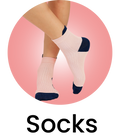When it comes to working out, many people focus on finding the right shoes and activewear, but often overlook the importance of selecting the right undergarments. The right undergarments can significantly impact your performance and comfort during exercise, while ill-fitting ones can lead to discomfort and even hinder your progress. In this tutorial, we will explore the different types of undergarments for exercise, factors to consider when selecting them, tips for trying and testing them, and how to properly maintain and care for them.
Understanding the Different Types of Undergarments
A. Sports bras
Sports bras are essential for women engaging in physical activities. They provide the necessary support and minimize breast movement, reducing discomfort and potential damage to breast tissue. When selecting a sports bra, it is crucial to consider proper support and fit. Look for bras that offer adjustable straps, underwire (if desired), and a snug fit that holds everything in place. Different styles and features, such as racerback or front closure, can also impact comfort and support.
B. Underwear
Choosing the right underwear for exercise is equally important. Look for materials that are breathable and moisture-wicking to keep you dry and comfortable during your workout. Avoid cotton underwear, as it tends to retain moisture and can lead to chafing and discomfort. Opt for synthetic fabrics like nylon or polyester, which are designed to wick away sweat and keep you cool. Additionally, consider styles that prevent chafing, such as seamless or moisture-wicking underwear.
Factors to Consider When Selecting Undergarments
A. Size and fit
Accurate measurements are crucial when selecting undergarments for exercise. Ill-fitting undergarments can cause discomfort, restrict movement, and even lead to injuries. Take the time to measure yourself properly and refer to size charts provided by manufacturers. Consider factors such as band size, cup size, and overall fit. If possible, try on different sizes and styles to find the perfect fit for your body.
B. Material and fabric
The material and fabric of your undergarments play a significant role in your comfort during exercise. Look for materials that are breathable and moisture-wicking to keep you dry and cool. Avoid materials that can cause irritation, such as lace or rough fabrics. Opt for soft, smooth fabrics that feel comfortable against your skin.
C. Support and comfort
Different activities require different levels of support. Consider the type of exercise you will be engaging in and choose undergarments that provide the appropriate level of support. For high-impact activities like running or jumping, opt for sports bras with maximum support and features like adjustable straps and padding. For low-impact activities like yoga or Pilates, lighter support may be sufficient. Prioritize comfort and choose undergarments that allow for a full range of motion.
Tips for Trying and Testing Undergarments
A. Trying on different styles and sizes
Don't be afraid to try on different styles and sizes when selecting undergarments for exercise. What works for one person may not work for another. Experiment with different brands, styles, and sizes to find what suits you best. Take the time to move around, stretch, and simulate the movements you will be doing during your workouts to ensure the undergarments provide the necessary support and comfort.
B. Evaluating comfort, support, and range of motion
When trying on undergarments, pay attention to how they feel. Evaluate the comfort, support, and range of motion they provide. Ensure that the undergarments stay in place and do not dig into your skin or cause any discomfort. Move around and perform exercises to assess how well they support you during different movements. Remember, comfort and support are key to a successful workout.
C. Considering personal preferences and body type
Everyone's body is unique, and personal preferences vary. Consider your body type and what makes you feel most comfortable and confident during exercise. Some people prefer more coverage, while others prefer minimal coverage. Take into account your personal style and what makes you feel good about yourself. Ultimately, the undergarments you choose should make you feel comfortable, supported, and ready to conquer your workout.
Maintaining and Caring for Undergarments
A. Proper washing and drying techniques
To prolong the lifespan of your undergarments, it is essential to follow proper washing and drying techniques. Check the care instructions provided by the manufacturer and follow them accordingly. Use a gentle cycle and mild detergent when washing. Avoid using fabric softeners, as they can reduce the moisture-wicking properties of the fabric. Hang or lay flat to dry, as excessive heat from the dryer can damage the elasticity and shape of the undergarments.
B. When to replace worn-out undergarments
Over time, undergarments can lose their elasticity and support. It is important to regularly assess the condition of your undergarments and replace them when necessary. If the undergarments no longer provide the necessary support, have stretched out significantly, or show signs of wear and tear, it's time to invest in new ones. Remember, wearing worn-out undergarments can lead to discomfort and compromise your performance during exercise.
Conclusion
Selecting the best undergarments for exercise is crucial for both comfort and performance. By understanding the different types of undergarments, considering factors such as size, fit, material, and support, and taking the time to try and test different options, you can find undergarments that enhance your workout experience. Additionally, proper maintenance and knowing when to replace worn-out undergarments will ensure that you always have the support and comfort you need. Prioritize your comfort and performance by selecting the right undergarments for your workouts.





